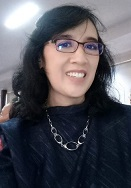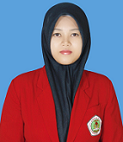Developing of fish anatomy learning module based on local wisdom in Ngebel Lake, Ponorogo, East Java
DOI:
https://doi.org/10.22219/jpbi.v6i2.11813Keywords:
contextual learning, fish anatomy, module, local wisdomAbstract
The use of local wisdom as learning resources has been widely known to be able to create meaningful learning. The purposes of this study were to 1) produce module based on freshwater fish anatomy as local wisdom in Ngebel Lake, Ponorogo and 2) find the quality of the module produced. The Research and Development (R&D) was designed based on the Thiagarajan model which consisted of defining, designing, developing, and disseminating stages. The data were collected using interview guidelines, validation sheets, and students’ response questionnaire. The validation results of the media, material, and language experts showed that the module was very valid with the percentages were 86.5%, 88.2%, and 85.3% respectively. In addition, the student responses reached 87.9% (very good). In conclusion, the fish anatomy learning module based on local wisdom is appropriate to be used as learning resource.Downloads
References
Aliman, M., Budijanto, B., Sumarmi, S., & Astina, I. K. (2019). Improving environmental awareness of high school students’ in Malang city through earthcomm learning in the geography class. International Journal of Instruction, 12(4), 79–94. doi: https://doi.org/10.29333/iji.2019.1246a
Al Sabei, S. D., & Lasater, K. (2016). Simulation debriefing for clinical judgment development: A concept analysis. Nurse Educ Today, 45, 42–47. doi: https://doi.org/10.1016/j.nedt.2016.06.008
Azer, S. A., & Azer, S. (2016). 3D Anatomy Models and Impact on Learning: A Review of the Quality of the Literature. Health Professions Education, 2(2), 80–98. doi: https://doi.org/10.1016/j.hpe.2016.05.002
Bergman, B. G. (2016). Assessing impacts of locally designed environmental education projects on students’ environmental attitudes, awareness, and intention to act. Environmental Education Research, 22(4), 480–503. doi: https://doi.org/10.1080/13504622.2014.999225
Bergman, E. M., Sieben, J. M., Smailbegovic, I., de Bruin, A. B. H., Scherpbier, A. J. J. A., & van der Vleuten, C. P. M. (2013). Constructive, collaborative, contextual, and self-directed learning in surface anatomy education. Anatomical Sciences Education, 6(2), 114–124. doi: https://doi.org/10.1002/ase.1306
Bruckermann, T., Ochsen, F., & Mahler, D. (2018). Learning opportunities in biology teacher education contribute to understanding of nature of science. Education Sciences, 8(3), 1–18. doi: https://doi.org/10.3390/educsci8030103
Ciolan, L., & Ciolan, L. E. (2014). Two perspectives, same reality? How authentic is learning for students and for their teachers. Procedia - Social and Behavioral Sciences, 142, 24–28. doi: https://doi.org/10.1016/j.sbspro.2014.07.581
Conradty, C., & Bogner, F. X. (2019). From STEM to STEAM: Cracking the code? How creativity & motivation interacts with inquiry-based learning. Creativity Research Journal, 31(3), 284–295. doi: https://doi.org/10.1080/10400419.2019.1641678
Cundill, G., & Rodela, R. (2012, December 30). A review of assertions about the processes and outcomes of social learning in natural resource management. Journal of Environmental Management. Elsevier. doi: https://doi.org/10.1016/j.jenvman.2012.08.021
Cutter-Mackenzie, A., & Edwards, S. (2013). Toward a model for early childhood environmental education: Foregrounding, developing, and connecting knowledge through play-based learning. Journal of Environmental Education, 44(3), 195–213. doi: https://doi.org/10.1080/00958964.2012.751892
Drew, V., & Mackie, L. (2011). Extending the constructs of active learning: Implications for teachers’ pedagogy and practice. The Curriculum Journal, 22(4), 451–467. doi: https://doi.org/10.1080/09585176.2011.627204
Ganguly, P. K. (2010). Teaching and learning of anatomy in the 21st century: direction and the strategies. The Open Medical Education Journal, 3(1), 5–10. doi: https://doi.org/10.2174/1876519X010030100005
Gould, R. K., Ardoin, N. M., Thomsen, J. M., & Wyman Roth, N. (2019). Exploring connections between environmental learning and behavior through four everyday-life case studies. Environmental Education Research, 25(3), 314–340. doi: https://doi.org/10.1080/13504622.2018.1510903
Greene, J. A., Plumley, R. D., Urban, C. J., Bernacki, M. L., Gates, K. M., Hogan, K. A., … Panter, A. T. (2019). Modeling temporal self-regulatory processing in a higher education biology course. Learning and Instruction. doi: https://doi.org/10.1016/j.learninstruc.2019.04.002
Hartini, S., Misbah, Helda, & Dewantara, D. (2017). The effectiveness of physics learning material based on South Kalimantan local wisdom. AIP Conference Proceedings, 1868(August), 1–7. doi: https://doi.org/10.1063/1.4995182
Huang, T.-C., Chen, C.-C., & Chou, Y.-W. (2016). Animating eco-education: To see, feel, and discover in an augmented reality-based experiential learning environment. Computers and Education, 96(May), 72–82. doi: https://doi.org/10.1016/j.compedu.2016.02.008
Huang, Y.-M., & Chiu, P.-S. (2015). The effectiveness of a meaningful learning-based evaluation model for context-aware mobile learning. British Journal of Educational Technology, 46(2), 437–447. doi: https://doi.org/10.1111/bjet.12147
Istiani, R. M., & Retnoningsih, A. (2015). Pemanfaatan lingkungan sekolah sebagai sumber belajar menggunakan metode post to post pada materi klasifikasi makhluk hidup. Journal of Biology Education, 4(1), 70–80. doi: https://doi.org/10.15294/jbe.v4i1.5237
Ivanusic, J., Cowie, B., & Barrington, M. (2010). Undergraduate student perceptions of the use of ultrasonography in the study of “Living Anatomy.” Anatomical Sciences Education, 3(6), 318–322. doi: https://doi.org/10.1002/ase.180
Jacobs, G. M., & Renandya, W. A. (2019). Student centered cooperative learning. Singapore: Springer Singapore. doi: https://doi.org/10.1007/978-981-13-7213-1
Jeong, H., & Hmelo-Silver, C. E. (2010). Productive use of learning resources in an online problem-based learning environment. Computers in Human Behavior, 26(1), 84–99. doi: https://doi.org/10.1016/j.chb.2009.08.001
Koh, J. H. L. (2017). Designing and integrating reusable learning objects for meaningful learning: Cases from a graduate programme. Australasian Journal of Educational Technology, 33(5), 136–151. doi: https://doi.org/10.14742/ajet.3072
Kurniawan, M. H., Suharjito, Diana, & Witjaksono, G. (2018). Human anatomy learning systems using augmented reality on mobile application. Procedia Computer Science, 135, 80–88. doi: https://doi.org/10.1016/J.PROCS.2018.08.152
Martiningsih, I., Lisdiana, & Susilowati, S. M. E. (2019). Development of module based on scientific contextual additives material to increase learning outcomes and science process skills in junior high school. Journal of Innovative Science Education, 8(3), 271–278. doi: https://doi.org/10.15294/JISE.V0I0.27790
Mora, H., Signes-Pont, M. T., Fuster-Guilló, A., & Pertegal-Felices, M. L. (2020). A collaborative working model for enhancing the learning process of science & engineering students. Computers in Human Behavior, 103, 140–150. doi: https://doi.org/10.1016/j.chb.2019.09.008
Morse, B. A. B., Carman, J. P., & Zint, M. T. (2019). Fostering environmental behaviors through observational learning. Journal of Sustainable Tourism, 27(10), 1530–1552. doi: https://doi.org/10.1080/09669582.2019.1647219
Nilasari, E., Djatmika, E. T., & Santoso, A. (2016). Pengaruh penggunaan modul pembelajaran kontekstual terhadap hasil belajar siswa kelas V Sekolah Dasar. Jurnal Pendidikan: Teori, Pendidikan, Dan Pengembangan, 1(7), 1399–1404. doi: https://doi.org/10.17977/jp.v1i7.6583
Ningrum, E., Nandi, N., & Sungkawa, D. (2018). The impact of local wisdom-based learning model on students’ understanding on the land ethic. In IOP Conference Series: Earth and Environmental Science (Vol. 145, pp. 1–5). Institute of Physics Publishing. doi: https://doi.org/10.1088/1755-1315/145/1/012086
Obergriesser, S., & Stoeger, H. (2020). Students’ emotions of enjoyment and boredom and their use of cognitive learning strategies – How do they affect one another? Learning and Instruction, 66. doi: https://doi.org/10.1016/j.learninstruc.2019.101285
Oerke, B., & Bogner, F. X. (2013). Social desirability, environmental attitudes, and general ecological behaviour in children. International Journal of Science Education, 35(5), 713–730. doi: https://doi.org/10.1080/09500693.2011.566897
Pedrosa-de-Jesus, H., Moreira, A., Lopes, B., & Watts, M. (2014). So much more than just a list: Exploring the nature of critical questioning in undergraduate sciences. Research in Science and Technological Education, 32(2), 115–134. doi: https://doi.org/10.1080/02635143.2014.902811
Ramdiah, S., Abidinsyah, A., Royani, M., Husamah, H., & Fauzi, A. (2020). South Kalimantan local wisdom-based biology learning model. European Journal of Educational Research, 9(2), 639–653. doi: https://doi.org/10.12973/eu-jer.9.2.639
Raub, L. A., Shukor, N. A., Arshad, M. Y., & Rosli, M. S. (2015). An integrated model to implement contextual learning with virtual learning environment for promoting higher order thinking skills in Malaysian secondary schools. International Education Studies, 8(13), 41–46. doi: https://doi.org/10.5539/ies.v8n13p41
Rayens, W., & Ellis, A. (2018). Creating a student-centered learning environment online. Journal of Statistics Education, 26(2), 92–102. doi: https://doi.org/10.1080/10691898.2018.1475205
Rufii, R. (2015). Developing module on constructivist learning strategies to promote students’ independence and performance. International Journal of Education, 7(1), 18–28. doi: https://doi.org/10.5296/ije.v7i1.6675
Schumm, M. F., & Bogner, F. X. (2016). How environmental attitudes interact with cognitive learning in a science lesson module. Education Research International, 2016, 1–7. doi: https://doi.org/10.1155/2016/6136527
Sechi, G., Borri, D., De Lucia, C., & Celmins, V. (2018). Environmental learning in regions: A social capital based approach. The case of Latvia. Environmental Education Research, 24(3), 343–364. doi: https://doi.org/10.1080/13504622.2016.1214867
Serrat, M. A., Dom, A. M., Buchanan, J. T., Williams, A. R., Efaw, M. L., & Richardson, L. L. (2014). Independent learning modules enhance student performance and understanding of anatomy. Anatomical Sciences Education, 7(5), 406–416. doi: https://doi.org/10.1002/ase.1438
Setiyadi, M. W., Ismail, & Gani, H. A. (2017). Pengembangan modul pembelajaran biologi berbasis pendekatan saintifik untuk meningkatkan hasil belajar siswa. Journal of Educational Science and Technology, 3(2), 102–112. doi: https://doi.org/10.26858/est.v3i2.3468
Simons, J., Beaumont, K., & Holland, L. (2018). What factors promote student resilience on a level 1 distance learning module? Open Learning, 33(1), 4–17. doi: https://doi.org/10.1080/02680513.2017.1415140
Steele, A., Hives, L., & Scott, J. (2016). Stories of learning: Inquiry-based pathways of discovery through environmental education. Cogent Education, 3(1). doi: https://doi.org/10.1080/2331186X.2016.1202546
Sujinah, S., Mu’ammar, M. A., Affandy, A. N., & Supriyanto, E. (2019). The effectiveness of local wisdom based on textbook to improve students’ writing literacy. Universal Journal of Educational Research, 7(12), 2573–2583. doi: https://doi.org/10.13189/ujer.2019.071204
Suwarni, E. (2015). Pengembangan buku ajar berbasis lokal materi keanekaragaman laba-laba di Kota Metro sebagai sumber belajar alternatif biologi untuk siswa SMA Kelas X. BIOEDUKASI (Jurnal Pendidikan Biologi), 6(2), 86–92. doi: https://doi.org/10.24127/bioedukasi.v6i2.336
Thang, F. K., & Koh, J. H. L. (2017). Deepening and transferring twenty-first century learning through a lower secondary Integrated Science module. Learning: Research and Practice, 3(2), 148–162. doi: https://doi.org/10.1080/23735082.2017.1335426
Thiagarajan, S., Semmel, D. S., & Semmel, M. I. (1974). Instructional development for training teachers of exceptional children: A sourcebook. Council for Exceptional. Children, 1920 Association Drive, Reston, Virginia 22091. Retrieved from https://files.eric.ed.gov/fulltext/ED090725.pdf
Thuneberg, H. M., Salmi, H. S., & Bogner, F. X. (2018). How creativity, autonomy and visual reasoning contribute to cognitive learning in a STEAM hands-on inquiry-based math module. Thinking Skills and Creativity, 29, 153–160. doi: https://doi.org/10.1016/j.tsc.2018.07.003
Triyani, E., Putra, N. M. D., & Alimah, S. (2019). Contextual learning by local wisdom to improve the understanding of simple machine concept. Jurnal Profesi Keguruan, 5(1), 96–101. Retrieved from https://journal.unnes.ac.id/nju/index.php/jpk/article/view/18670
Whiley, D., Witt, B., Colvin, R. M., Sapiains Arrue, R., & Kotir, J. (2017). Enhancing critical thinking skills in first year environmental management students: a tale of curriculum design, application and reflection. Journal of Geography in Higher Education, 41(2), 166–181. doi: https://doi.org/10.1080/03098265.2017.1290590
Yuliamalia, L. (2019). Tradisi larung saji sebagai upaya menjaga ekosistem di Wisata Telaga Ngebel Ponorogo (studi literatur). Agastya, 9(2), 135–145. doi: https://doi.org/10.25273/ajsp.v9i2.3878
Downloads
Published
Issue
Section
License
Authors who publish with JPBI (Jurnal Pendidikan Biologi Indonesia) agree to the following terms:
- For all articles published in JPBI, copyright is retained by the authors. Authors give permission to the publisher to announce the work with conditions. When the manuscript is accepted for publication, the authors agree to automatic transfer of the publishing right to the publisher.
- Authors retain copyright and grant the journal right of first publication with the work simultaneously licensed under a Creative Commons Attribution-ShareAlike 4.0 International License that allows others to share the work with an acknowledgment of the work's authorship and initial publication in this journal.
- Authors are able to enter into separate, additional contractual arrangements for the non-exclusive distribution of the journal's published version of the work (e.g., post it to an institutional repository or publish it in a book), with an acknowledgment of its initial publication in this journal.
- Authors are permitted and encouraged to post their work online (e.g., in institutional repositories or on their website) prior to and during the submission process, as it can lead to productive exchanges, as well as earlier and greater citation of published work (See The Effect of Open Access).

This work is licensed under a Creative Commons Attribution-ShareAlike 4.0 International License.

 Scopus ID:
Scopus ID: 


















